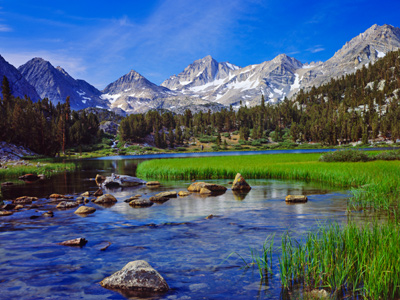This Science quiz is called 'The Earth' and it has been written by teachers to help you if you are studying the subject at middle school. Playing educational quizzes is a fabulous way to learn if you are in the 6th, 7th or 8th grade - aged 11 to 14.
It costs only $12.50 per month to play this quiz and over 3,500 others that help you with your school work. You can subscribe on the page at Join Us
Earth, the planet on which we live, is not a solid ball of rock. The Earth and its atmosphere provide everything needed to sustain life. The Earth consists of several layers, and the surface and atmosphere that we know today has changed a lot since it was first formed. For the middle school, you need to know about the processes that build mountains, create oceans, eathquakes and volcanoes, how and why the atmosphere has changed naturally as well as how human activities have resulted in further changes in the atmosphere. This middle school Chemistry quiz is all about the layers withing the Earth - the inner core, the outer core, the mantle and the crust.
Before the 1960s, ideas about the processes that changed the Earth were barely understood. There were various theories about the age of the Earth. The Romans believed it to be about 2000 years old; the ancient Egyptians believed it was about 40,000 years old; the Babylonian civilization believed anywhere between 200,000 and 400,000 years old. In modern times, a seventeenth century Irish archbishop named James Ussher used the Bible to decide that the Earth was created at 6pm on the 22nd October, 4004 BC. Other dates from different versions of the Bible differ by up to 1,500 years.
Charles Darwin is known for his book On The Origin of Species By Natural Selection. He believed that the Earth was several hundred million years old, as he realized that evolution needed timescales like that to have happened. He didn't take into account the fact that for most of its history, there was little or no life on Earth, so his guess was remarkably accurate. At about the same time, Lord Kelvin used ideas about the cooling of the Earth and came up with a value of about one tenth of Darwin's figure which caused a few arguments. Today we know about the mantle and the core - things unknown to scientists of the past - and we now believe that the real age of the Earth is much greater, it was formed about 4.5 billion years ago. That's what science is all about, as new techniques are developed and new information is discovered, theories and 'facts' change. .
Before the 20th Century, no-one really knew how mountains were formed, or why rocks could be folded and broken. Earthquakes and volcanoes just happened, no-one had managed to satisfactorily explain why they happened. The first person to start to make sense of things was the German scientist, Alfred Wegener. He noticed that the continental shelves of some of the continents matched up closely. He also realized that identical fossils and rocks were now separated by thousands of miles of ocean. He devised the idea of continental drift. Other scientists rejected his idea as there was no mechanism to make it happen. In the 1960s, that evidence began to appear and the theory of plate tectonics was developed and is now very widely accepted.
Try this quiz and see how well you understand the layers which make up the Earth - the inner core, the outer core, the mantle and the crust.








